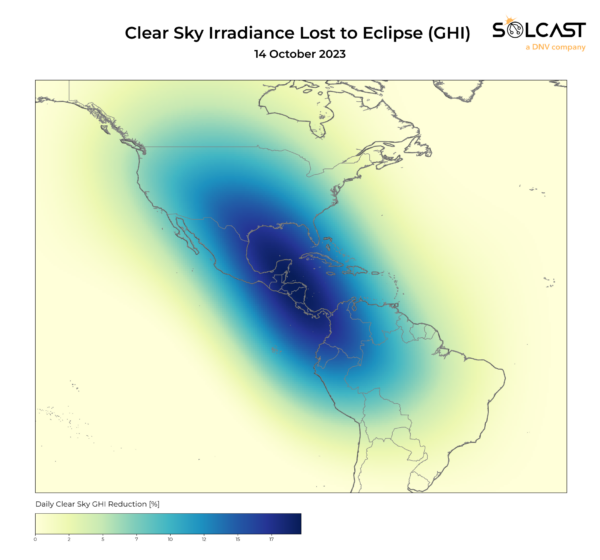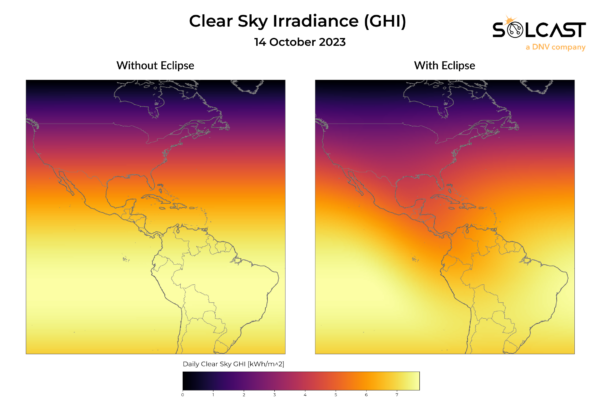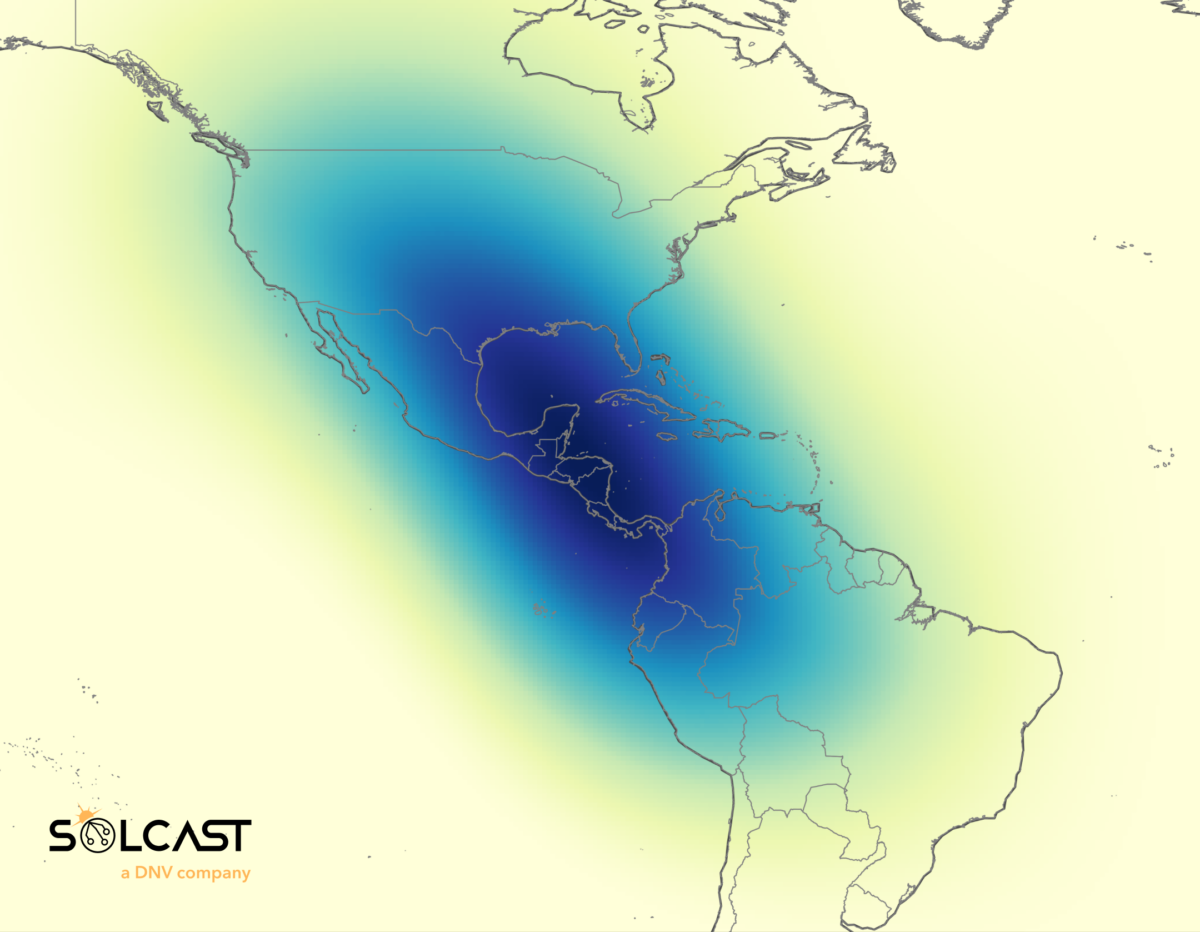On October 14, North and South America are set to experience an annular eclipse.
Some states could lose up to 17% of their daily solar energy production, according to data collected by Solcast, a DNV company, via the Solcast API. The path of the eclipse tracks across the southwestern United States, from Oregon to Texas, before continuing through Mexico, Central America and ending in Brazil, though impacts will be seen across all of the contiguous US and the top of South America.
This eclipse is an annular eclipse, meaning that the moon will not appear big enough to completely block the sun, as it does in a total eclipse. This means irradiance will not drop to 0%, and the sky will not darken completely. As the ‘eye’ of the eclipse passes over an area, the total clearsky irradiance will drop to 9.5% of normal clearsky levels. The total duration of the eclipse effect will be 3 hours in some locations, though the peak will only last for seconds.
This image shows the total loss in clearsky irradiance across the day, where blue represents the areas that will see the greatest losses on October 14th.

At the time of writing, the eclipse is 14 days away, which is too far for accurate cloud predictions. However, it is possible to calculate the maximum irradiance losses, i.e. the impact in the absence of clouds.
As can be seen in this image the path of the eclipse peak impact will hit Oregon first, at 0920 local time, before passing over Northern California, Nevada, Utah, Arizona, New Mexico and reaching Texas at 1150 local time. Texas will be hit hardest by the eclipse. The event occurs in the middle of the day when solar energy production is at its peak. As a result, some areas in Texas will experience losses of up to
17% in solar energy production.
The eclipse could significantly impact power grids like CAISO and ERCOT in the U.S. According to data from the U.S. Energy Information Administration, the most affected states had 40.756 GW of operational large-scale solar assets as of August 2023. This includes 13.046 GW in Texas, and represents a significant proportion of the 80.368 GW total nameplate capacity of large scale Solar PV in the US.

The total difference can be seen in the above comparison, contrasting total daily irradiance with and without the effects of the eclipse. The largest net impacts are over Texas, the Gulf of Mexico, Central America and Columbia. Whilst Texas will suffer losses up to 17%, the peak loss will reach 20% in Central America.
In South America, the eclipse will make its way in the afternoon and evening. It will track over the Yucatan Peninsula and Central America before reaching Colombia and finally ending in western Brazil at 1620 local time. As the eclipse will pass at or near the middle of the day, when irradiance peaks, losses will be greatest from Texas to Columbia, and proportional daily losses will be lower in Oregon at the start of their day, and Brazil at the end of theirs.
Solcast will continue to track the impacts of the eclipse, including calculating solar impacts once accurate cloud forecasting is possible.
Solcast produces these figures by tracking clouds and aerosols at 1-2km resolution globally, using satellite data and proprietary AI/ML algorithms. This data is used to drive irradiance models, enabling Solcast to calculate irradiance at high resolution, with typical bias of less than 2%, and also cloud-tracking forecasts. This data is used by more than 300 companies managing over 150GW of solar assets globally.
The views and opinions expressed in this article are the author’s own, and do not necessarily reflect those held by pv magazine.
This content is protected by copyright and may not be reused. If you want to cooperate with us and would like to reuse some of our content, please contact: editors@pv-magazine.com.








By submitting this form you agree to pv magazine using your data for the purposes of publishing your comment.
Your personal data will only be disclosed or otherwise transmitted to third parties for the purposes of spam filtering or if this is necessary for technical maintenance of the website. Any other transfer to third parties will not take place unless this is justified on the basis of applicable data protection regulations or if pv magazine is legally obliged to do so.
You may revoke this consent at any time with effect for the future, in which case your personal data will be deleted immediately. Otherwise, your data will be deleted if pv magazine has processed your request or the purpose of data storage is fulfilled.
Further information on data privacy can be found in our Data Protection Policy.